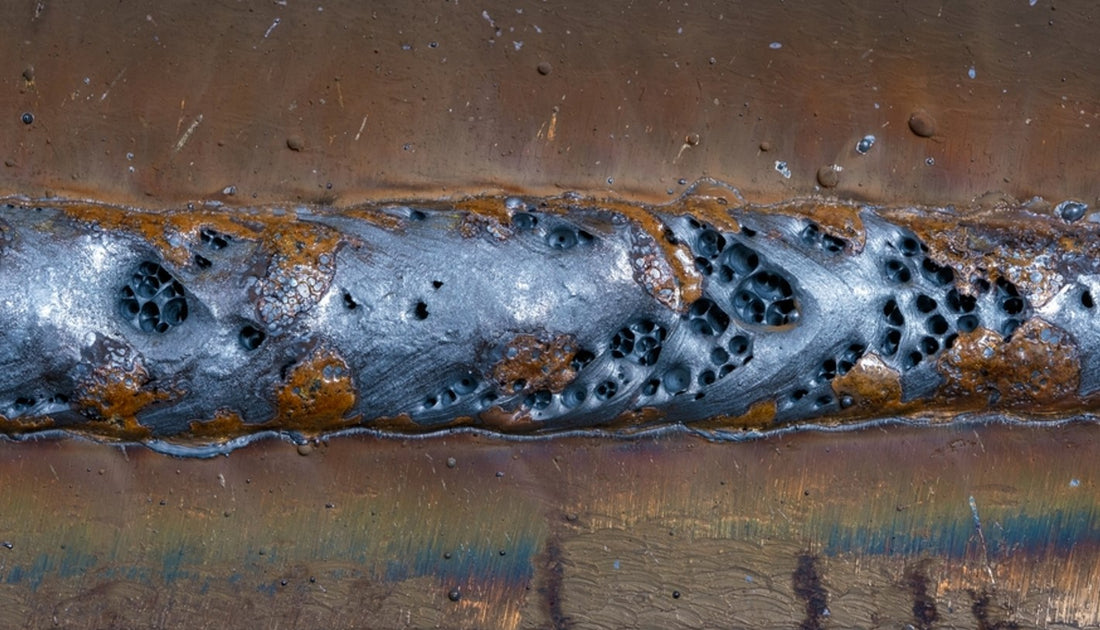Comprehensive Guide: What is Porosity in Welding and How to Prevent It
Comprehensive Guide: What is Porosity in Welding and How to Prevent It
Blog Article
Unraveling the Enigma of Porosity in Welding: Tips for Decreasing Issues and Making Best Use Of Quality
In the complex globe of welding, porosity remains a consistent obstacle that can significantly impact the top quality and honesty of bonded joints. Understanding the elements that contribute to porosity formation is crucial in the search of remarkable welds. By untangling the mystery of porosity and carrying out efficient approaches for defect minimization, welders can boost the requirements of their work to achieve premium high quality end results. As we explore the depths of porosity in welding, discovering the secrets to its prevention and control will certainly be paramount for specialists seeking to understand the art of high-grade weldments.
Recognizing Porosity in Welding
Porosity in welding, a typical problem run into by welders, refers to the presence of gas pockets or spaces in the bonded material, which can endanger the integrity and quality of the weld. These gas pockets are commonly trapped throughout the welding procedure as a result of various elements such as improper securing gas, polluted base products, or wrong welding parameters. The development of porosity can deteriorate the weld, making it prone to fracturing and deterioration, inevitably leading to structural failings.
By acknowledging the significance of preserving correct gas protecting, making certain the cleanliness of base products, and maximizing welding setups, welders can considerably minimize the likelihood of porosity development. On the whole, an extensive understanding of porosity in welding is essential for welders to create top quality and durable welds.

Usual Causes of Porosity
When inspecting welding processes for prospective top quality issues, understanding the common reasons of porosity is vital for maintaining weld integrity and avoiding structural failings. Porosity, characterized by the existence of cavities or gaps in the weld metal, can substantially compromise the mechanical residential properties of a welded joint.
Furthermore, welding at inappropriate criteria, such as exceedingly high travel rates or currents, can create excessive turbulence in the weld swimming pool, trapping gases and causing porosity. By attending to these typical reasons through correct gas securing, material prep work, and adherence to optimum welding criteria, welders can lessen porosity and enhance the high quality of their welds.
Strategies for Porosity Avoidance
Applying effective safety nets is essential in reducing the incident of porosity in welding procedures. One strategy for porosity prevention is making sure correct cleansing of the base metal prior to welding. Impurities such as oil, oil, corrosion, and paint can lead to porosity, so detailed cleaning using proper solvents or mechanical approaches is crucial.

An additional key safety net is the choice of the best welding consumables. Using top quality filler materials and shielding gases that appropriate for the base steel and welding process can substantially decrease the risk of porosity. Additionally, preserving proper welding criteria, such as voltage, existing, take a trip rate, and gas circulation price, is crucial for porosity avoidance. Differing the recommended settings can cause inappropriate gas insurance coverage and insufficient blend, causing porosity.
In addition, utilizing appropriate welding methods, such as keeping a constant travel speed, electrode angle, and arc length, can aid stop porosity (What is Porosity). Sufficient training of welders to ensure they follow finest practices and quality assurance procedures is also important in lessening porosity flaws in welding

Ideal Practices for High Quality Welds
Making certain adherence to sector criteria and proper weld joint site here prep work are fundamental aspects of attaining consistently top notch welds. Along with these foundational actions, there are several ideal practices that welders can implement to additionally enhance the top quality of their welds. One secret method is preserving proper cleanliness in the welding area. Impurities such as oil, grease, rust, and paint can adversely impact the quality of the weld, bring about problems. Thoroughly cleaning the work surface and bordering area prior to welding can assist mitigate these problems.
An additional finest method is to thoroughly choose discover here the ideal welding specifications for the particular products being signed up with. This consists of establishing the right voltage, present, travel from this source rate, and shielding gas circulation rate. Correct criterion selection ensures optimum weld penetration, blend, and total high quality. Additionally, using top quality welding consumables, such as electrodes and filler metals, can significantly influence the final weld high quality. Investing in costs consumables can result in stronger, a lot more resilient welds with fewer problems. By complying with these ideal techniques, welders can continually create top notch welds that satisfy market requirements and go beyond customer expectations.
Value of Porosity Control
Porosity control plays a critical duty in ensuring the stability and top quality of welding joints. Porosity, characterized by the visibility of dental caries or spaces within the weld metal, can significantly jeopardize the mechanical residential or commercial properties and architectural stability of the weld. Extreme porosity deteriorates the weld, making it extra at risk to breaking, rust, and general failing under operational loads.
Effective porosity control is crucial for keeping the wanted mechanical homes, such as toughness, ductility, and strength, of the bonded joint. What is Porosity. By minimizing porosity, welders can enhance the general top quality and integrity of the weld, ensuring that it satisfies the performance demands of the designated application
Furthermore, porosity control is essential for attaining the wanted visual look of the weld. Excessive porosity not only deteriorates the weld however also takes away from its visual charm, which can be crucial in markets where aesthetics are essential. Correct porosity control techniques, such as utilizing the appropriate shielding gas, regulating the welding parameters, and making sure correct cleanliness of the base materials, are vital for creating top notch welds with very little flaws.

Conclusion
Finally, porosity in welding is an usual defect that can jeopardize the high quality of the weld. By understanding the reasons for porosity and executing appropriate prevention strategies, welders can reduce issues and attain greater high quality welds. It is vital to manage porosity in welding to guarantee the honesty and strength of the final item. Carrying out ideal methods for porosity control is vital for achieving optimum welding outcomes.
Report this page